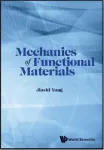(Press-News.org) One in ten early deaths could be prevented if everyone managed at least half the recommended level of physical activity, say a team led by researchers at the University of Cambridge.
In a study published today in the British Journal of Sports Medicine, the researchers say that 11 minutes a day (75 minutes a week) of moderate-intensity physical activity – such as a brisk walk – would be sufficient to lower the risk of diseases such as heart disease, stroke and a number of cancers.
Cardiovascular diseases – such as heart disease and stroke – are the leading cause of death globally, responsible for 17.9 million deaths per year in 2019, while cancers were responsible for 9.6 million deaths in 2017. Physical activity – particularly when it is moderate-intensity – is known to reduce the risk of cardiovascular disease and cancer, and the NHS recommends that adults do at least 150 minutes of moderate-intensity activity or 75 minutes of vigorous-intensity activity a week.
To explore the amount of physical activity necessary to have a beneficial impact on several chronic diseases and premature death, researchers from the Medical Research Council (MRC) Epidemiology Unit at the University of Cambridge carried out a systematic review and meta-analysis, pooling and analysing cohort data from all of the published evidence. This approach allowed them to bring together studies that on their own did not provide sufficient evidence and sometimes disagreed with each other to provide more robust conclusions.
In total, they looked at results reported in 196 peer-reviewed articles, covering more than 30 million participants from 94 large study cohorts, to produce the largest analysis to date of the association between physical activity levels and risk of heart disease, cancer, and early death.
The researchers found that, outside of work-related physical activity, two out of three people reported activity levels below 150 min per week of moderate-intensity activity and fewer than one in ten managed more than 300 min per week.
Broadly speaking, they found that beyond 150 min per week of moderate-intensity activity, the additional benefits in terms of reduced risk of disease or early death were marginal. But even half this amount came with significant benefits: accumulating 75 min per week of moderate-intensity activity brought with it a 23% lower risk of early death.
Dr Soren Brage from the MRC Epidemiology Unit said: “If you are someone who finds the idea of 150 minutes of moderate-intensity physical activity a week a bit daunting, then our findings should be good news. Doing some physical activity is better than doing none. This is also a good starting position – if you find that 75 minutes a week is manageable, then you could try stepping it up gradually to the full recommended amount.”
Seventy-five minutes per week of moderate activity was also enough to reduce the risk of developing cardiovascular disease by 17% and cancer by 7%. For some specific cancers, the reduction in risk was greater – head and neck, myeloid leukaemia, myeloma, and gastric cardia cancers were between 14-26% lower risk. For other cancers, such as lung, liver, endometrial, colon, and breast cancer, a 3-11% lower risk was observed.
Professor James Woodcock from the MRC Epidemiology Unit said: “We know that physical activity, such as walking or cycling, is good for you, especially if you feel it raises your heart rate. But what we’ve found is there are substantial benefits to heart health and reducing your risk of cancer even if you can only manage 10 minutes every day.”
The researchers calculated that if everyone in the studies had done the equivalent of at least 150 min per week of moderate-intensity activity, around one in six (16%) early deaths would be prevented. One in nine (11%) cases of cardiovascular disease and one in 20 (5%) cases of cancer would be prevented.
However, even if everyone managed at least 75 min per week of moderate-intensity physical activity, around one in ten (10%) early deaths would be prevented. One in twenty (5%) cases of cardiovascular disease and nearly one in thirty (3%) cases of cancer would be prevented.
Dr Leandro Garcia from Queen’s University Belfast said: “Moderate activity doesn’t have to involve what we normally think of exercise, such as sports or running. Sometimes, replacing some habits is all that is needed. For example, try to walk or cycle to your work or study place instead of using a car, or engage in active play with your kids or grand kids. Doing activities that you enjoy and that are easy to include in your weekly routine is an excellent way to become more active.”
The research was funded by the Medical Research Council and the European Research Council.
What counts as moderate-intensity physical activity?
Moderate-intensity physical activity raises your heart rate and makes you breathe faster, but you would still be able to speak during the activity. Examples include:
Brisk walking
Dancing
Riding a bike
Playing tennis
Hiking
Reference
Garcia, L, Pearce, M, Abbas, A, Mok, A & Strain, T et al. Non-occupational physical activity and risk of cardiovascular disease, cancer, and mortality outcomes: a dose response meta-analysis of large prospective studies. British Journal of Sports Medicine; 27 Feb 2023; DOI: 10.1136/bjsports-2022-10566
END
Daily 11 minute brisk walk enough to reduce risk of early death, say Cambridge researchers
2023-03-01
ELSE PRESS RELEASES FROM THIS DATE:
Pink + pink = gold: hybrid hummingbird’s feathers don’t match its parents
2023-03-01
The Pink-throated Brilliant hummingbird, Heliodoxa gularis, has, unsurprisingly, a brilliant pink throat. So does its cousin, the Rufous-webbed Brilliant hummingbird, Heliodoxa branickii. When scientists found a Heliodoxa hummingbird with a glittering gold throat, they thought they might have found a new species. DNA revealed a different story: the gold-throated bird was a never-before-documented hybrid of the two pink-throated species.
John Bates, the senior author of a new study in the journal Royal Society Open Science reporting on the hybrid, first encountered the unusual bird while doing fieldwork in Peru’s Cordillera ...
Researchers identify three intestinal bacteria found in dementia with Lewy bodies
2023-03-01
Dementia with Lewy bodies (DLB), one of the most common forms of dementia, has no cure. Previous studies suggested that gut bacteria, the microorganisms that live in the human digestive tract, play a role in Parkinson’s disease, another neurodegenerative disorder, but the bacteria involved in DLB had not been identified. Now, a group led by researchers at the Nagoya University Graduate School of Medicine in Japan has identified three bacteria involved in DLB: Collinsella, Ruminococcus, and Bifidobacterium. Their findings, reported in npj Parkinson's ...
Scientists find that bison are impacting streams in Yellowstone National Park
2023-03-01
Greater numbers of Bison in Yellowstone National Park may come at a cost to the biological diversity of the important streamside habitats of the Park according to a new report in the journal Ecosphere Bison influences on composition and diversity of riparian plant communities in Yellowstone National Park. Riparian areas (streamside zones) form the interface between terrestrial and aquatic ecosystems and are hotspots of biodiversity and productivity in the public lands of the Western USA. The study findings are that ...
Keto vs vegan: Study of popular diets finds over fourfold difference in carbon footprints
2023-03-01
For those on keto or paleo diets, this may be tough to swallow.
A new study from Tulane University which compared popular diets on both nutritional quality and environmental impact found that the keto and paleo diets, as eaten by American adults, scored among the lowest on overall nutrition quality and were among the highest on carbon emissions.
The keto diet, which prioritizes high amounts of fat and low amounts of carbs, was estimated to generate almost 3 kg of carbon dioxide for every ...
Centuries of whaling data highlight likely climate change effect
2023-03-01
Southern right whales adjusted their foraging grounds over the past 30 years as climate change altered where prey could be found, according to a University of Auckland, Waipapa Taumata Rau scientist.
Dr Emma Carroll, of the School of Biological Sciences, was senior author of a paper which used data gleaned from contemporary whale skin samples along with whaling records stretching back to 1792. Over the past three decades, the whales increased their use of mid-latitude foraging grounds in the south Atlantic and southwest Indian oceans in the late summer and autumn, according to Carroll and dozens of collaborators including lead author Solène Derville, of Oregon State University.
The ...
Long COVID linked to lower brain oxygen levels, cognitive problems and psychiatric symptoms
2023-03-01
Long COVID is associated with reduced brain oxygen levels, worse performance on cognitive tests and increased psychiatric symptoms such as depression and anxiety, according to new research studying the impacts of the disease.
Researchers from the University of Waterloo combined the results of two new parallel studies: a laboratory study involving cognitive testing and imaging of oxygen levels in the brain, and a national population survey of Canadians in 2021 and 2022.
The laboratory study found that individuals who had experienced symptomatic COVID-19 illness performed worse on two computer tasks. One is measuring inhibition and another impulsive decision-making. ...
AI draws most accurate map of star birthplaces in the Galaxy
2023-03-01
Stars are formed by molecular gas and dust coalescing in space. These molecular gases are so dilute and cold that they are invisible to the human eye, but they do emit faint radio waves that can be observed by radio telescopes.
Observing from Earth, a lot of matter lies ahead and behind these molecular clouds and these overlapping features make it difficult to determine their distance and physical properties such as size and mass. So, even though our Galaxy, the Milky Way, is the only galaxy close ...
Elastic, thermal, electric and magnetic interactions in solids
2023-03-01
Conventional mechanics of materials books treat elastic deformations of solids through one-dimensional models for extension of rods, torsion of shafts and bending of beams. In functional materials, elastic, thermal, electric and magnetic fields interact. A systematic treatment of these fields and their interactions for one-dimensional models of extension, torsion and bending of beams in addition to the underlying three-dimensional theory is presented in new book, Mechanics of Functional Materials, by Professor of Mechanical and Materials ...
Injectable tissue provides significant, long-term relief for chronic back pain
2023-03-01
FAIRFAX, Va. (March 1, 2023)—A minimally invasive treatment that injects allograft disc tissue into the spine to relieve pain associated with degenerative disc disease provides significant improvement in pain and function over a sustained period, according to new research to be presented at the Society of Interventional Radiology Annual Scientific Meeting in Phoenix.
The treatment, known as viable disc allograft supplementation, injects specialized cells and fluid into a patient’s damaged disc. The cells ...
Study finds prostate artery embolization to be effective long-term treatment for enlarged prostate
2023-03-01
FAIRFAX, Va. (March 1, 2023)—Prostate artery embolization (PAE) provides long-term effectiveness in treating urinary symptoms from an enlarged prostate gland, according to new research to be presented at the Society of Interventional Radiology Annual Scientific Meeting in Phoenix.
In the largest long-term North American study, 1,000 patients who underwent PAE reported significant sustained relief, up to six years, from lower urinary tract symptoms (LUTS) or urinary retention due to benign prostate hyperplasia (BPH). BPH is the most common benign condition in men, affecting more than 50 percent of men over age 60. The ...




